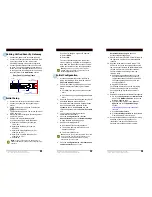
Overview of APX 1000 Operation and Configuration
APX 1000 management features
APX 1000™ Getting Started Guide
4-3
For an introduction to the command-line interface and its shortcuts, see the TAOS Command-
Line Interface Guide.
Onboard flash memory and software updates
You can perform software upgrades of the onboard flash memory in the field. You upgrade the
APX 1000 unit by accessing it locally through its serial (CONTROL) port and downloading
software upgrades from a TFTP server. For details, see the APX 8000™/MAX TNT®
Administration Guide.
RADIUS support
You can use RADIUS to store user profiles for connections that terminate on the APX 1000.
The RADIUS server must be compliant with vendor-specific attributes (VSAs), as defined in
RFC 2138. To use RADIUS, you must also configure the APX 1000 unit to communicate with
the RADIUS server.
For information about configuring and using RADIUS, see the TAOS RADIUS Guide and
Reference.
Tracking system activity
An APX 1000 unit supports many commands for monitoring system activity. To display the
commands that are available with the permission settings in the current User profile, enter the
help
(or
?
) command. The following example shows the commands available for the
admin
login. The left column shows command names, and the right column shows the command
class, which determines the permissions required to use the command.
admin> ?
?
@fatalTest ( debug )
acct-failsafe ( debug)
arptable ( system)
atmLines ( system)
atmsvcroute ( system)
attach ( debug)
auFile ( debug)
auth ( user)
bgp ( system)
briChannels ( system)
cadslLines ( system)
callback ( debug)
callroute ( diagnostic)
cat ( system)
cbcardif ( debug)
cbcifping ( debug )
cbStats ( debug )
cbuser ( debug )
cbvoip ( debug )
cgCtrl ( system )
clear ( user )
[More? <ret>=next entry, <sp>=next page, <^C>=abort]
















































